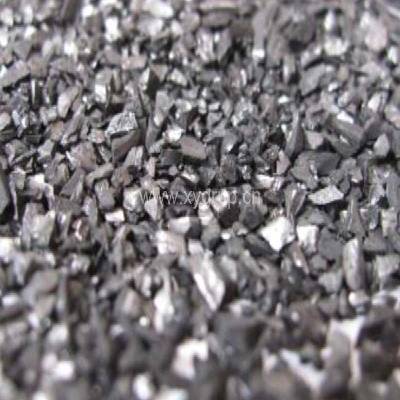Activated Carbon is Used in Electroplating Purification
Activated Carbon is a porous structure material, which is prepared by impregnating raw materials with chloride and acid, then carbonizing at low temperature, and then burning activation or activating pure carbon at high temperature in a gas medium. The powder surface area of 1g activated carbon is as high as 500-1500m2, and it has excellent adsorption performance. In the purification of various electroplating solutions, its main function is to remove grease, organic impurities and decomposition products of various additives. Pay attention to the following points when using activated carbon to purify the plating solution:

Granular Activated Carbon
1. Choose suitable activated carbon products.
There are two types of activated carbon on the market, granular and powder. It is more convenient to use Granular Activated Carbon to filter, but the treatment effect is far less than that of powdered activated carbon. The reason is that the specific surface area of powder is much larger than that of granular. Choose according to the degree of contamination of the plating solution.
2. Activated carbon should not contain impurity ions harmful to the plating solution.
At present, the raw materials for making activated carbon are mainly wood, coal, and hard-shelled nuts (such as coconut). Practice has proved that in the purification of plating solution, activated carbon made from hard nut shells is better than activated carbon made from coal. Inferior activated carbon often contains more impurities such as zinc and should not be used. If activated carbon containing zinc impurities is used in the purification of nickel plating bath, it will cause worse pollution results.
3. The dosage should be sufficient.
For plating solutions with different degrees of contamination by organic impurities, appropriate input amount should be adopted, generally 2~5g/L. If the amount is insufficient, the treatment effect will be poor. A small process test tank or Hull tank can also be used to determine the amount of activated carbon through a small test.
4. The θ and pH of the bath to be treated should be appropriate.
Most baths have better treatment effects under the conditions of θ of 55~70℃ and pH of 5~6. Θ and pH should remain stable during the whole process.
5. Stir fully and evenly.
It is advisable to use circulating filtration and compressed air for intermittent and strong stirring. If manual stirring is used, it should be carried out continuously in the plating tank without leaving dead corners. t stirring should generally be 2~4h.
6. Standing time.
After the adsorption process is completed, the plating solution should be allowed to stand for a period of time before filtering, t static is 6-12h; after sufficient precipitation, filter 2 to 3 times until there is no residual carbon powder in the plating solution, and the plating solution is the color of the body (no Charcoal black).
7. Prevent desorption.
The electroplating process of continuous cycle filtration of activated carbon is adopted. When the activated carbon is saturated, the activated carbon in the filter element should be cleaned and replaced in time to prevent desorption and re-contaminate the plating solution by impurities.
The company also provides Activated Carbon Filters, please feel free to contact us if necessary.











